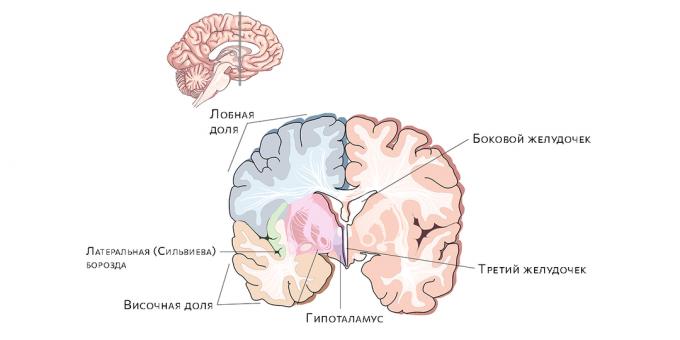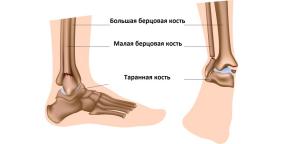Where does hydrocephalus come from and how is it treated?
Miscellaneous / / August 01, 2021
In severe cases, it can lead to death.
What is hydrocephalus
HydrocephalusHydrocephalus / Mayo ClinicDropsy is a collection of cerebrospinal fluid in small cavities inside the brain (ventricles). At the same time, it presses on the surrounding tissues, which is why the organ cannot function normally.

Why does hydrocephalus develop?
Cerebrospinal fluid is needed to remove metabolic products, maintain a constant intracranial pressure and to absorb shock from walking and head movements. Normally, fluid is produced in the tissues lining the ventricles of the brain, and is absorbed back through the vessels at its base. The appearance of hydrocephalus can be associated with three processesHydrocephalus / Mayo Clinic:
- Outflow violation. For example, something is blocking the ventricles or their ducts.
- Poor absorption. Because of inflammation or injury, the blood vessels in the brain cannot draw in fluid.
- Accelerated production. More fluid is produced than the body can remove.
In newborn babies, hydrocephalus is sometimes causedHydrocephalus Fact Sheet / National Institute of Neurologikal Disorders and Stroke intrauterine infections that affect brain tissue, as well as congenital malformations of the nervous system or injuries sustained during childbirth.
In other cases, the development of the disease can lead brain tumors, infections of the nervous system, for example meningitis, bleeding in the brain with stroke or injury.
What is hydrocephalus
Congenital and acquired. They also emit false hydrocephalus, in which symptoms of the disease appear, but there are no signs of fluid accumulation in the ventricles. This type includes two statesHydrocephalus Fact Sheet / National Institute of Neurologikal Disorders and Stroke:
- Replacement hydrocephalus, or ex vacuo. Usually appears after an injury or stroke. In this case, the brain tissue atrophies and shrinks, and the ventricles dilate to maintain a constant volume of the cranial contents.
- Normotensive hydrocephalus. May occur after a head injury, stroke, brain bleeding, or surgery. The amount of cerebrospinal fluid increases very slowly, so the ventricles stretch, and the brain has time to adapt. Symptoms of damage to the central nervous system still appear, although intracranial pressure remains normal.
Why hydrocephalus is dangerous
It all determines how quickly the disease developed and when it began to be treated. After all, the higher the pressure on the brain, the more its tissues are damaged. This can lead to complications like thisHydrocephalus / Mayo Clinic:
- impairment of memory, intelligence, decreased attention;
- violation of gait;
- incontinence.
Without therapy, hydrocephalus in children leadsHydrocephalus in Children / Cleveland Clinic to retardation of mental and physical development.
If the disease is not treated, then, regardless of age, due to the pressure of fluid on the brain, a person can die.
What are the symptoms of hydrocephalus
Manifestations depend on age.
In newborns
Infants with hydrocephalus may have a ball-shaped head that is often overweight at birth or grows faster than it should. You can also notice that the fontanelle at the crown is convex or very dense.
Parents should suspect that something is amiss if the child develops these symptomsHydrocephalus / Mayo Clinic:
- vomit;
- frequent crying and irritability;
- drowsiness, lethargy;
- convulsions;
- downward displacement of the eyeballs;
- lack of muscle tone, although it is normally increased in newborns, as a result, the joints of the arms and legs are easily unbent;
- poor appetite;
- insufficient weight gain.
In children over one month old
The signs will be slightly different. Here they areHydrocephalus / Mayo Clinic:
- headaches;
- nausea and vomiting;
- abnormal increase in head size;
- violation of coordination of movements;
- loss of balance;
- poor appetite;
- convulsions;
- cloudy eyes;
- lethargy and drowsiness;
- irritability and behavior change;
- decline in school performance;
- loss of acquired skills in toddlers, such as the ability to walk or talk.
In adults
In this case, the symptoms areHydrocephalus / Mayo Clinic:
- headaches;
- lethargy;
- violation of coordination of movements;
- frequent urge to use the toilet;
- visual impairment - for example, seeing double;
- impairment of memory and thinking, decreased attention.
In the elderly
After 60 years, the most common signs of hydrocephalus are as followsHydrocephalus / Mayo Clinic:
- loss of bladder control;
- memory loss;
- deterioration in thinking and reasoning ability;
- shuffling gait;
- impaired coordination of movements.
How is hydrocephalus diagnosed?
If a person has the symptoms listed above, he needs to see a neurologist. The doctor will first conduct an examination: he will check reflexes, coordination of movements, muscle tone, vision and hearing, and assess the state of the psyche. Then he will give directions for a number of examinationsHydrocephalus Fact Sheet / National Institute of Neurologikal Disorders and Stroke:
- Ultrasound of the brain. It makes sense to do it only for children under 1.5 years old, who have not yet overgrown the fontanelle on their head. In adults, ultrasound will not pass through the bones of the skull.
- Magnetic resonance imaging (MRI). On the images, the doctor will be able to look at the ventricles of the brain and all its tissues to assess the flow of cerebrospinal fluid.
- Computed tomography (CT). It will give an idea of the size of the ventricles and help determine what is interfering with the outflow.
- Lumbar puncture. This is a study in which a needle is inserted into the lumbar spine to analyze fluid composition and assess intracranial pressure.
- Measurement of intracranial pressure. To do this, a thin sensor is inserted directly into the ventricles of the brain through a hole in the skull.
- Fundus examination. Needed to determine if there is damage to the optic nerve due to high intracranial pressure.
How is hydrocephalus treated?
The only way to reduce the amount of fluid in the brain is to have surgery. Choose one of two optionsHydrocephalus Fact Sheet / National Institute of Neurologikal Disorders and Stroke:
- Bypass surgery. It will help regulate the outflow of fluid from the brain. To do this, a tube is placed under the skin, one end of which is inserted into the ventricle, and the other into the cavity of the heart or abdomen, so that the liquid enters the bloodstream faster. A person will have to spend their entire life with a shunt.
- Ventriculostomy of the third ventricle. The neurosurgeon makes a small hole through which the cerebrospinal fluid can flow further and not accumulate in one place.
Read also
- 9 early symptoms of Alzheimer's
- 5 causes of headache in the back of the head and how to deal with it
- How stress and worry physically change our brains
- Why people lose memory as they age and how to avoid it
- 3 simple tips to keep your brain young and healthy
Scientists talk about dozens of COVID-19 symptoms that can persist for more than 6 months
Scientists have named the characteristic symptoms of the delta strain of coronavirus. They are different from the usual COVID-19



